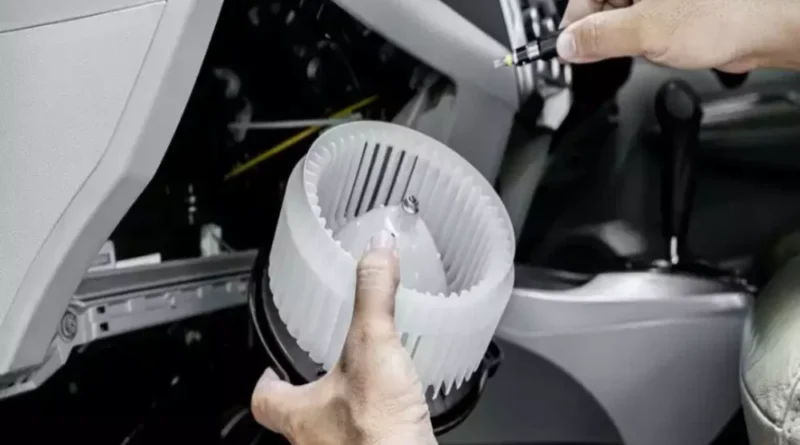Heater Blower Motor 17461719: A Comprehensive Guide for Optimal Performance
In modern vehicles, the comfort of passengers is greatly dependent on the climate control systems installed in the car. Among the key components of these systems is the heater blower motor. The heater blower motor 17461719, in particular, plays a critical role in ensuring the efficiency of your vehicle’s heating, ventilation, and air conditioning (HVAC) system. This guide provides a comprehensive look into the importance of the blower motor, its functionality, common issues, and maintenance tips to ensure optimal performance.
Understanding the Heater Blower Motor 17461719
The heater blower motor is an essential part of the HVAC system, responsible for circulating air throughout the cabin. It ensures the airflow from the vents reaches the desired temperature, keeping the vehicle’s interior warm during winter and cool in summer. The 17461719 blower motor is specifically designed to meet the performance needs of certain vehicle models, often seen in General Motors (GM) and other compatible automobiles.
Its primary function is to take the heated or cooled air and push it through the car’s duct system, evenly distributing it across the cabin. Without this motor, even if the air is being heated or cooled, it would not reach the passengers, rendering the climate control system ineffective.
Key Features of Heater Blower Motor 17461719
- Durable Design: Built for long-lasting performance, the blower motor 17461719 is engineered with high-quality materials that ensure resistance to wear and tear.
- Efficient Air Circulation: With its powerful motor, it can effectively push large volumes of air, making the climate control system more efficient.
- Noise Reduction: Modern blower motors, including the 17461719 model, are designed to minimize operational noise, ensuring a quieter cabin environment for passengers.
- Ease of Installation: The blower motor 17461719 is often plug-and-play, making it relatively simple for technicians or experienced car owners to replace without extensive modifications.
- Compatibility: This model is compatible with various GM vehicles, making it a go-to replacement part for those specific makes and models.
How Does the Heater Blower Motor Work?
The heater blower motor operates in conjunction with the vehicle’s HVAC system. It typically sits behind the glove box and uses an electric motor to spin a fan or squirrel cage, which pushes air through the car’s ducts. The air either passes over the heating core or through the air conditioning evaporator, depending on whether the system is set to heating or cooling.
The fan speed is adjustable via controls on the vehicle’s dashboard, which regulates the airflow intensity. Many blower motors, including the 17461719, are paired with a resistor that adjusts the motor’s speed based on user settings. This variable speed function ensures that the motor can run at low, medium, or high power depending on the cabin’s climate needs.
Common Issues with the Heater Blower Motor 17461719
Over time, like any other mechanical or electrical component, the heater blower motor can face various issues that can impact its performance. Below are some of the most common problems users may encounter:
- No Airflow: One of the most apparent signs of a blower motor issue is the lack of airflow, even when the HVAC system is on. This could be caused by a complete motor failure, a blown fuse, or a problem with the wiring.
- Weak Airflow: If the airflow from the vents seems weaker than usual, it may indicate that the motor is struggling due to wear, a clogged air filter, or debris blocking the airflow.
- Unusual Noises: Grinding, rattling, or squeaking noises coming from the blower motor are signs that the motor bearings may be worn or that debris has entered the motor housing.
- Erratic Fan Speeds: When the blower motor speeds fluctuate without changing the control settings, the problem could be with the motor resistor or electrical connections.
- Overheating: A motor that frequently overheats can point to an underlying electrical issue, possibly caused by worn wiring or a faulty blower motor resistor.
Maintenance Tips for Optimal Performance
Maintaining the blower motor 17461719 is crucial for ensuring the longevity of your vehicle’s HVAC system. Regular maintenance and timely replacement of worn components can keep the motor functioning efficiently.
- Regularly Inspect and Clean: Periodically inspect the blower motor and its surroundings to ensure that no debris, dust, or other contaminants are clogging the fan or vents. A clogged system can strain the motor and reduce its lifespan.
- Change Cabin Air Filter: A clogged cabin air filter can restrict airflow, causing the blower motor to work harder than necessary. Replacing the air filter according to your vehicle’s recommended service interval will help maintain optimal airflow.
- Check Electrical Connections: Ensure that the wiring and electrical connections to the blower motor are secure. Loose or corroded connections can lead to erratic motor performance or complete failure.
- Listen for Unusual Sounds: Pay attention to any strange sounds when the blower motor is running. Addressing minor issues early can prevent costly repairs down the line.
- Replace When Necessary: If the blower motor begins showing signs of wear or is no longer functioning properly, replacing it with a compatible part like the 17461719 model is crucial to avoid further damage to your vehicle’s HVAC system.
Replacing the Heater Blower Motor
When it comes time to replace the heater blower motor, you’ll need to ensure that the 17461719 model is compatible with your vehicle. In most cases, replacement involves removing the glove box or under-dash panel, disconnecting the old motor, and plugging in the new one. It’s always recommended to consult your vehicle’s manual or seek the assistance of a professional if you’re unsure about the installation process.
Conclusion
The heater blower motor 17461719 is an indispensable component of your vehicle’s HVAC system, responsible for ensuring the comfort of passengers by regulating airflow throughout the cabin. Understanding its functions, common issues, and maintenance tips can help you prolong its life and keep your vehicle’s climate control running efficiently. Regular inspections and timely replacements can ensure that the blower motor delivers optimal performance, providing you with a comfortable and safe driving experience year-round.
FAQs about Heater Blower Motor 17461719
- What does the heater blower motor 17461719 do?
It circulates air through the vehicle’s HVAC system to regulate the cabin temperature.- How do I know if my blower motor is failing?
Signs include no airflow, weak airflow, strange noises, or inconsistent fan speeds.- Can I replace the blower motor myself?
- Yes, with basic tools and the right instructions, you can replace the blower motor yourself.
- Why is my blower motor making noise?
Unusual noises could be due to worn-out bearings or debris in the motor housing.- How long does a heater blower motor last?
With proper maintenance, a blower motor can last several years, though it varies depending on usage.




